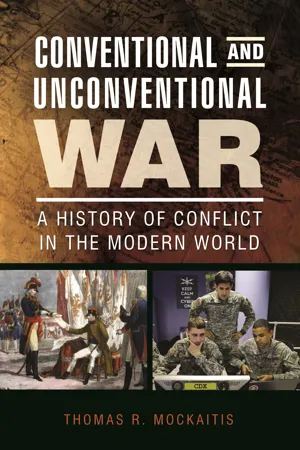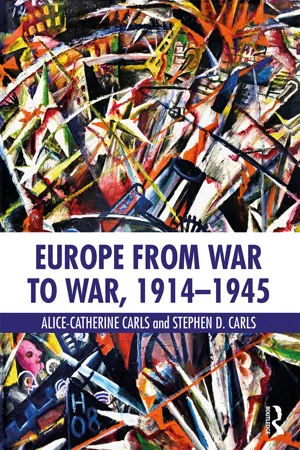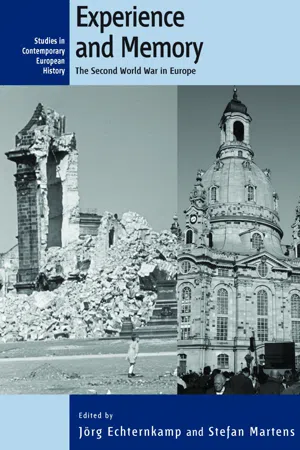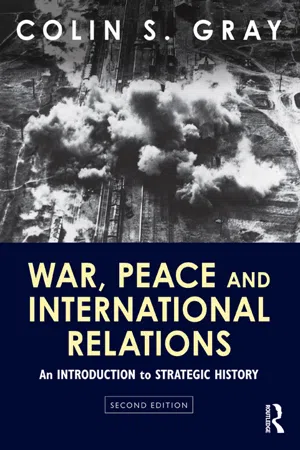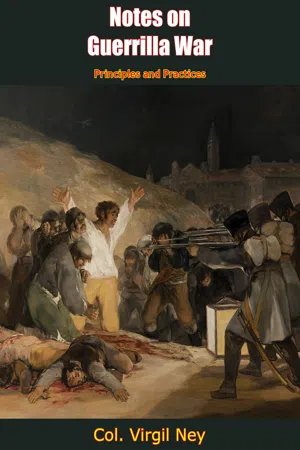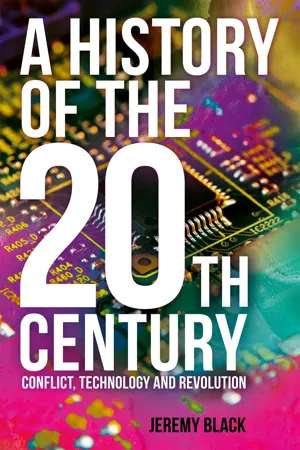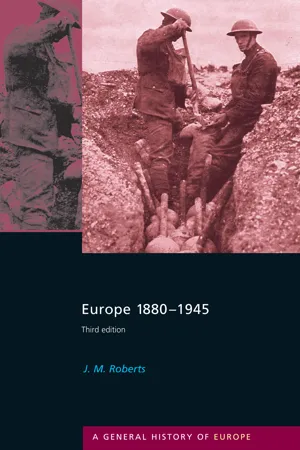History
Europe WWII
Europe during World War II was a period of widespread conflict and devastation, characterized by the rise of totalitarian regimes, the invasion of Poland, the Battle of Britain, the Holocaust, and the eventual defeat of Nazi Germany. The war had far-reaching consequences for the continent, leading to significant geopolitical and social changes that continue to shape Europe to this day.
Written by Perlego with AI-assistance
Related key terms
9 Key excerpts on "Europe WWII"
- eBook - ePub
Conventional and Unconventional War
A History of Conflict in the Modern World
- Thomas R. Mockaitis(Author)
- 2017(Publication Date)
- Praeger(Publisher)
CHAPTER TEN World War II in EuropeAlthough the Great War has been retroactively dubbed a “world war,” most of the fighting took place in Europe. Indeed, during the interwar period American libraries catalogued books on the subject under the heading, “European War, 1914–1918.” World War II, on the other hand, was a truly global conflict. It involved 1.7 billion people (three-quarters of the earth’s population) from 61 countries and was fought in locales ranging from jungle atolls in the South Pacific to the snow-covered steppes of Russia.1 In addition to being more extensive, World War II was far more lethal than its predecessor. The increased destructive power of weapons, especially bombs, combined with virulent ideologies, whose intensity had not been seen since the wars of religion three centuries earlier, made the conflict the deadliest in human history. It claimed the lives of 60 million people, three quarters of them civilians.2 When the belligerents saw each other not as soldiers in opposing armed forces, but as members of alien races bent on one another’s destruction, they made no distinction between combatant and noncombatant, man, woman, or child, old or young. World War II completed the evolution toward total war.BlitzkriegOn September 1, 1939, two German army groups invaded Poland from three directions: north from East Prussia, northwest from Pomerania, and southwest from Silesia and occupied Czechoslovakia. In a week they had broken the back of Polish resistance and were driving toward Warsaw, which capitulated on September 28 after savage bombing. The Soviets, who invaded from the east on September 17 per an agreement with the Germans that also gave them the Baltic States, contributed nothing to the German victory but took their share of the spoils. Reporting on the campaign, Time magazine gave a new word to the English language:This was no war of occupation, but a war of quick penetration and obliteration—Blitzkrieg, lightning war. Even with no opposition, armies had never moved so fast before. Theorists had always said that only infantry could take and hold positions. But these armies had not waited for the infantry. Swift columns of tanks and armored trucks had plunged through Poland while bombs raining from the sky heralded their coming. They had sawed off communications, destroyed stores, scattered civilians, spread terror. Working sometimes 30 miles ahead of infantry and artillery, they had broken down the Polish defenses before they had time to organize. Then, while the infantry mopped up, they had moved on, to strike again far behind what had been called the front. By week’s end it mattered very little whether Warsaw stood or fell. The Republic of Poland, aged 20, was lost.3 - eBook - ePub
- Alice-Catherine Carls, Stephen D. Carls(Authors)
- 2017(Publication Date)
- Routledge(Publisher)
As the war expanded from Europe to Africa and Asia, Europe’s colonies became major points of interest for both sides, owing to their strategic value and their importance as sources of manpower and raw materials. Major military operations took place on both continents, with one result being altered relationships between Europe’s colonial powers and their colonies. By 1945, nationalist movements in many colonies were strong enough to challenge their colonizers’ authority and ultimately gain independence for their countries, although in some instances only after prolonged struggles.Finally, World War II confirmed the Soviet Union and the United States as the world’s two superpowers, but the two countries, though wartime allies, emerged from the conflict increasingly as rivals holding competing worldviews. Rifts in their partnership started appearing at the wartime conferences involving the Big Three and the disagreements became serious enough that the two sides could not reach a final agreement on postwar Germany. The war also left behind a power vacuum in Europe owing to Germany’s destruction and a considerably weakened Britain and France. The Soviet Union, emerging from the war as Europe’s dominant military power, seemed poised to fill the void. It was then that the United States stepped forward as the decisive counterbalance to the Soviet Union in Europe. The U.S. decided to maintain its military presence in Western Europe and to provide the continent with massive economic assistance in the form of the Marshall Plan that went into effect in 1948. By the end of the decade, Europe found itself locked in a Cold War that had the United States and its North Atlantic Treaty Organization (NATO) allies of Western Europe and Canada on one side, and the Soviet Union and its Communist satellite states of Eastern Europe on the other.p.290 Notes1 Julian Jackson, The Fall of France: The Nazi Invasion of 1940 (New York: Oxford University Press, 2003), 47.2 Raymond F. Betts, Uncertain Dimensions: Western Overseas Empires in the Twentieth Century - eBook - ePub
- John Mueller(Author)
- 2013(Publication Date)
- Cornell University Press(Publisher)
CHAPTER 4
WORLD WAR II AS A REINFORCING EVENT
Europeans brought war under a degree of control in the middle of the last millennium with the development of disciplined military and policing forces and with the consequent rise of coherent states. But they still considered it to be a natural, inevitable and, often, desirable fact of life. After the trauma of World War I, they moved to use their control of war to eliminate the institution entirely from their affairs with each other.Since that war, countries in the developed world have participated in four wars or kinds of war: first, the cluster of wars known as World War II; second, wars relating to the Cold War; third, various wars in their colonies; and fourth, still to be defined and delimited, policing wars: assorted applications of military force after the Cold War to pacify civil conflicts and to topple regimes deemed harmful. The second and third of these are taken up in the next chapter, and the fourth is the central subject of chapters 7 and 8.This chapter deals with the first. It surveys the aggressor states that launched World War II, and it concludes that, but for the machinations of one man—Adolf Hitler—the Second World War in Europe would likely never have come about. It also explores the implications of this conclusion, and it assesses the impact of World War II on the developed world’s developing sense of war aversion.THE QUEST FOR PEACE AFTER THE GREAT WAR
The Great War (as it was to be called for more than two decades) chiefly inspired bitterness, disillusionment, recrimination, and revulsion in Europe. For the most part, war was no longer embraced as supreme theater, redemptive turmoil, a cleansing thunderstorm, or an uplifting affirmation of manhood. It was what the first modern general, William Tecumseh Sherman, had called it a half century earlier: hell. People who often had praised war and eagerly anticipated its terrible, determining convulsions now found themselves appalled by it. Within half a decade, war opponents, once a derided minority, had become a decided majority: everyone now seemed to be a peace advocate.1 - eBook - ePub
Experience and Memory
The Second World War in Europe
- Jörg Echternkamp, Stefan Martens, Jörg Echternkamp, Stefan Martens(Authors)
- 2010(Publication Date)
- Berghahn Books(Publisher)
The Europe-discourse of German expatriates, for example, changed fundamentally in 1938/39. Until then, the experiences of the Weimar Republic had shaped rather vague notions of “Europe.” The Munich Agreement, the Hitler–Stalin Pact, and last but not least the World War as well as precursors to a bipolar world order led to a systematic discourse on Europe which distanced itself from the National Socialist ideas of a racially determined continent. 18 After the end of the war, this discourse would have continuing effects on the ideology of the “occident.” 19 The European historiography that conceives Europe as a whole and depicts culture and progress as intrinsic values of a European culture, was time and again directly related to experiences of extreme crisis: during the First World War, the 1930s, and finally the Second World War. In 1944/45, the title of Lucien Febvre's inauguration speech at the recently liberated Collège de France was “L'Europe. Genèse d'une civilization.” 20 Moreover, European works of history were part of the ideological battle of Western democracies against National Socialism and Fascism, first and foremost The Unity of European History, which John Bowle had written in large parts during the war. 21 In the postwar era, especially after the founding of European institutions, European histories were written with teleological intent. They were supposed to bear witness to the path toward European unity, which had already been laid out and traveled in the past. Entirely in the narrative style of the older national histories, the historical roots of a collective (national or European) identity were to be laid bare, and the lines of continuity purportedly dating back centuries drawn into the present - eBook - ePub
War, Peace and International Relations
An introduction to strategic history
- Colin S. Gray(Author)
- 2013(Publication Date)
- Routledge(Publisher)
10 World War II in Europe, I The structure and course of total war Reader's guide : Casualties. The wars that comprised World War II. A strategic narrative of the war. The Holocaust. Introduction: total war The actuality or the threat of war was by far the most important influence on international relations in the twentieth century. Its outcomes reshaped societies and enforced regime changes, added and deleted states to and from the geopolitical map, and accelerated the long process of global decolonization. Warfare, its memories, legends, myths and consequences of all kinds, virtually defined the European experience in the century. Two total wars dominated the first fifty years, while the threat of a potentially total nuclear war overhung, even dominated, all but ten of the second. World War II brought casualty figures to new heights. If one includes the Sino-Japanese War that began in 1937, the total death toll in the war was of the order of 53.5 million. That figure has to be suspect in detail, but it is reliable as to order of magnitude. Whereas in 1914–18 the belligerents mobilized some 65 million men for military duty, in 1939–45 the comparable figure was 105 million, a fraction of whom were women. Also, unusually in modern times, the civilian death toll exceeded the military, and by a wide margin (perhaps 36.5 million to 17 million; see Table 10.1). There were three principal reasons why this was the case. First, the growing maturity of air power guaranteed that civilians would be targets, both inadvertently, as collateral damage, and intentionally, as required by the new doctrine of seeking victory, or at least to coerce, by strategic air power. Second, everywhere, even eventually in Germany following the defeat at Stalingrad in the winter of 1942–3, the war was explained and conducted as a ‘people's war’: everybody was at war - eBook - ePub
Notes on Guerrilla War
Principles and Practices
- Col. Virgil Ney(Author)
- 2017(Publication Date)
- Arcole Publishing(Publisher)
CHAPTER V—THE WORLD WAR II ERA
Europe and Soviet Russia
On the western front during World War II, guerrilla warfare played an equally important role. There was nevertheless a lack of understanding and appreciation of guerrilla warfare that precluded the full exploitation of the potential, in conjunction with conventional operations. Unlike the Russians, the western powers did not fully realize the value of incorporating guerrilla warfare closely in their strategy.{99}During the period of World War II, 1940-1945, guerrilla warfare was conducted on a world wide scale. By the very nature of the global conflict, guerrilla activity was fostered internally and encouraged externally. It must be recalled that World War II had for its geographical delimits several theaters of operations, i.e ., the European-African-Middle East, the Near East and Mediterranean, the Pacific and China, Burma, India.As the Nazi Wehrmacht rolled over Europe with Blitzkrieg tactics, and later as the tentacles of the Greater East Asia Co-prosperity Sphere strangled the lands and people of the South-west Pacific and the Far East, the stunned civilian populations were faced with the facts of life under brutal hostile military occupation. The way of life, the mores , the hopes and ambitions of millions were overnight circumscribed or discarded by the rule of swaggering, “goose-stepping” conquerors, whose only guide line was “Heil Hitler!” In the Far East it was the same, except that “Banzai” was substituted for “Heil Hitler.”Once the smoke and confusion of military defeat had died down and the invaded people realized that their professional or conscript national army was unable to continue the fight, the idea of resistance was born. Among men, this reaction to the fact of invasion and military defeat is not new or unusual. Throughout history there are ample records attesting to this vital force in human society. Collectively and individually it rests upon the basic qualities of patriotism, morality, love of family, hate, fear, courage, indignation, and shame. - eBook - ePub
Warfare and Society in Europe
1898 to the Present
- Michael S. Neiberg(Author)
- 2003(Publication Date)
- Routledge(Publisher)
7WAR AND SOCIETY IN EUROPE, 1945–1989
Reckoning with World War II
Shortly after V-E Day, Winston Churchill summed up the meaning of the end of the war in the eloquent manner to which millions of Europeans had become accustomed. His words reveal the ambivalence with which many Europeans looked at their future and therefore they deserve long quotation:I wish I could tell you that our toils and troubles were over. … On the continent of Europe we have yet to make sure that the simple and honorable purposes for which we entered the war are not brushed aside or overlooked in the months following our success, and that the words “freedom,” “democracy,” and “liberation” are not distorted from their true meaning as we have understood them. There would be little use in punishing the Hitlerites for their crimes if law and justice did not rule, and if totalitarian or police Governments were to take the place of the German invaders. … I told you hard things at the beginning of these last five years; you did not shirk, and I should be unworthy of your confidence and generosity if I still did not cry: Forward, unflinching, unswerving, indomitable, till the whole task is done and the whole world is safe and clean.1Churchill had good reason for curbing his enthusiasm. Allied victory had destroyed Nazism, but it also had left the continent in almost as dangerous a state in 1945 as in 1939. The physical devastation alone was almost incomprehensible. The war left such a wake of destruction in its path that exact statistics are nearly impossible to calculate, even sixty years later. In 1945 Europe had to reckon with millions of dead, millions of refugees, an industrial infrastructure in ruins, and serious shortages of housing and food. Brian Bond’s estimate of 11,000,000 refugees (called “displaced persons” in the official lexicon) seems a reasonable estimate, although even that figure may be too low.2 - eBook - ePub
A History of the 20th Century
Conflict, Technology and Revolution
- Jeremy Black(Author)
- 2022(Publication Date)
- Arcturus(Publisher)
Chapter 5
World War II, 1939–1945
On 9 December 1941 following the Japanese attack on Pearl Harbor two days earlier, President Roosevelt declared, ‘All the continents in the world, and all the oceans, are now considered by the Axis strategists as one gigantic battlefield…’ Indeed, World War II was a global conflict to a degree not seen in World War I, and one unprecedented in scale in world history. This war saw terrible damage for the countries of Europe and East Asia, and was the only one so far in which atomic weaponry was used. The war left a world in which the United States was clearly the leading power. It also saw the Soviet Union become the leading power in Eurasia. Approximately 22–25 million military personnel and 38–55 million civilians died.Beginnings
Europeans usually begin the war in 1939, when the German invasion of Poland on 1 September led Britain and France, which had guaranteed Poland’s sovereignty, to go to war with Germany two days later after Hitler had refused to draw back. However, in the Soviet Union, the ‘Great Patriotic War’ with Germany is taken as starting on 22 June 1941. This year also engages American attention, as on 7 December it saw the Japanese attack on Pearl Harbor force America’s entry into the war despite strong isolationist sentiment.Nevertheless, as discussed in the previous chapter, large-scale warfare really began with the Japanese invasion of China in 1937. This launched the chain of events that was to lead eventually, with Pearl Harbor, to a determination to prevent the United States from blocking Japan’s dominance of East Asia. Japan’s inability to knock China out, despite not having to fight other opponents, also prefigured Germany’s failure to do the same with Britain and the Soviet Union. Both Germany and Japan were aggressive as well as expansionist powers, and their aggression drove the pace of the early stages of the war. - eBook - ePub
- J.M. Roberts(Author)
- 2013(Publication Date)
- Routledge(Publisher)
Chapter 16 Europe and the second world warThe nature of the war in Europe
Although truly worldwide, the war which began in 1939 had at its heart the same struggle as that of 1914–18, the overcoming of Germany. Her preponderance was greater than in 1914 because her opponents were weaker. Even though she was not to develop her full strength until 1943, Germany’s early victories were so complete that by the summer of 1941 there was a small likelihood that blockade could sap her strength and so win the war for England. Nor would the puny bombing offensive which was all the RAF could mount in the first two years of the war have any hope of doing so. Only the entry of Russia and the United States made it possible to envisage a military defeat of Germany by forcing her to fight on more than one major front. It was not, therefore, until 1941 that the war entered its major phase.The victories of the first two years had owed much to the disarray of Germany’s opponents. The ‘phoney war’ which lasted until April 1940 sprang from the wish of French and British soldiers to avoid the slaughter of Passchendaele and Verdun. Nor were German generals at first happy to risk its repetition. Nevertheless, when ordered to attack, they brought to bear superior skill, thinking, training and technology in a successful effort to reassert the power of the offensive over the defensive strength of modern armies. The doctrine of the Blitzkrieg was the condensation of their efforts. Owing something to British military thinking which was neglected or ignored at home, it exploited the powers of rapid movement and concentration made possible by the internal combustion engine. It used them in close coordination with aerial bombing to achieve a successful break in the enemy lines which was then exploited to the uttermost by penetration as far-ranging and deep as possible. This left defending forces outflanked and insecure before they had ever come into action. Great play was made with the moral and tactical possibilities of attacks on civilians so as to create an atmosphere of panic and block lines of communication. Campaigns of this sort were successful as late as the autumn of 1941, when the forward Russian armies were cut up and trapped by German armoured formations. They finally came to an end because the Russians had space and numbers enough to endure these attacks but, while they lasted, they provided Germany with victory without the economic and social strains of the Great War.1
Index pages curate the most relevant extracts from our library of academic textbooks. They’ve been created using an in-house natural language model (NLM), each adding context and meaning to key research topics.
